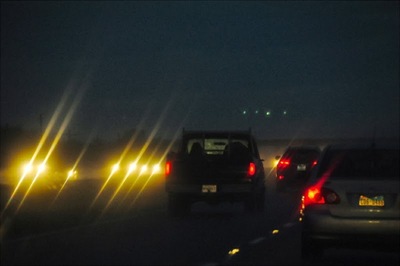Tips for Safe Night Driving as More Commuters are Driving in the Dark
 |
WASHINGTON -- November 6, 2014: While the time change has brought Americans an extra hour of sleep, it also has led to more commutes in the dark. GEICO wants motorists to take the appropriate steps to safely prepare themselves and their vehicles for more hours of night driving.
Become a Safer Night Driver
Since traffic fatalities are three times more likely to occur at night, drivers need to take precautions such as reducing speeds and increasing following distances since it's harder to judge the proximity of other cars. Additionally, motorists should extend common courtesy and only use high beams when there's no oncoming traffic. If an oncoming vehicle does not switch to low beams, focus on the white solid line to the right of the road or use curbs or the road's edge as a reference to maintain proper position in the lane without becoming blinded.
Another issue related to speed involves overdriving headlights. Typical low beams shine up to about 250 feet, and a vehicle should always be able to stop within this illuminated area; otherwise, a dangerous blind zone is created. It can take 150 to 200 feet to stop from 60 mph, making it more important to follow posted speed limits at night.
For teen drivers, parents should enforce curfews set by Graduated Driver Licensing (GDL) laws since a majority of teen accident fatalities happen between the hours of 9 p.m. and midnight.
Prepare Your Vehicle for Night Driving
Night driving is challenging enough by itself, making it important to eliminate any vehicle obstacles that could further hamper vision. Keep both windshields and all mirrors clean, as oncoming lights can accentuate even the smallest smudges.
Additionally, drivers should check that their own headlights are aimed correctly. Headlights positioned too high can blind other drivers and if they're tilted too low they won't illuminate far enough ahead. Consult the vehicle's owners' manual, or stop by a local garage to have a technician realign headlights.
For those driving older vehicles, think about replacing the bulbs, even if they have not burned out because they may have dimmed over time. If headlight covers look cloudy, consider purchasing a headlight restoration kit to polish off dirt and grime.
By taking these precautions, trips in the dark can become considerably safer.


